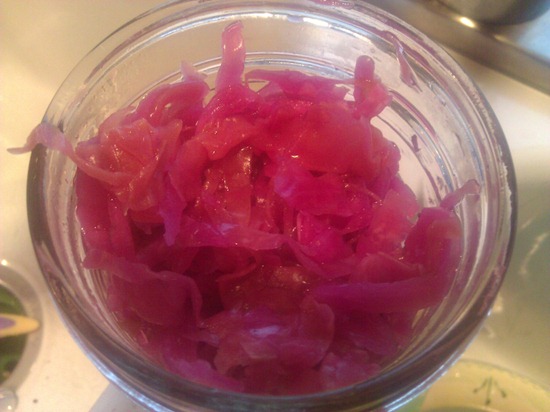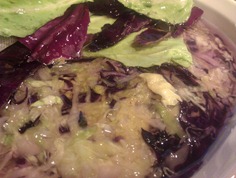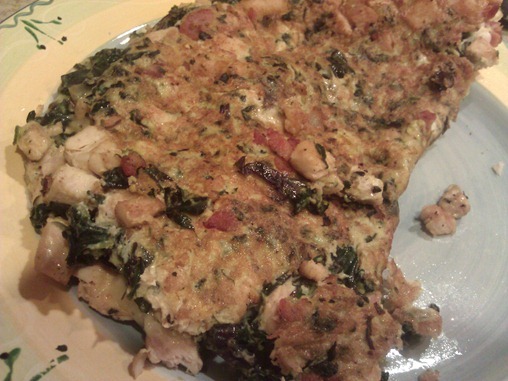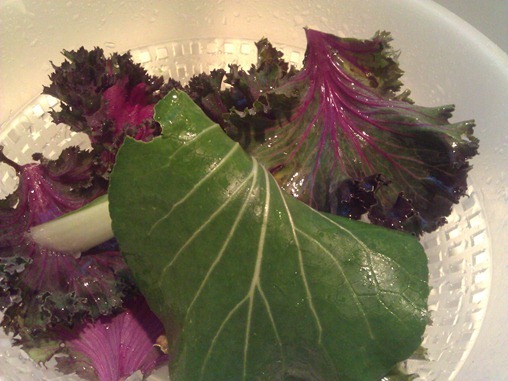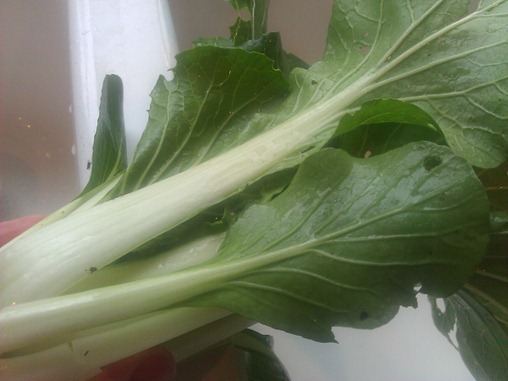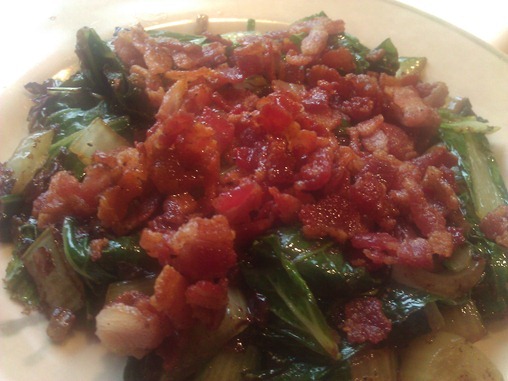Recent Articles
Frugal way to grow a garden with bird seed for temporary spaces
12.3 years ago birds, seed saving 3 Comments
Many people love bird watching. It is the favorite pastime of many gardeners too. For drawing the birds to the garden, you need to use the feeders. Instead of buying and storing the feeders every season, you can as well consider turning a special part of your garden exclusively for attracting birds. If the feeders are able to sprout, you can use them for growing the plants. Once the plants grow and mature, the birds can eat the seeds from the plants directly. Apart from that, you can pick the best seeds and store them away for the next season. If this interests you, here is how to grow bird seed.
1. Find a special spot
If you have a large garden, you can make use of the space effectively. Divide it into many parts. One special spot can be left for the birdseeds. The first thing to do is to find the best spot in your garden to attract the birds. The best thing is to consider an area away from your main garden. The birds will not disturb your garden and other useful items there.
2. Choose a good mixture of seeds
Choose a good mixture of seeds that can produce a wide variety of flowers. This can add a lot of color to the area and attract a lot of different types of birds. When the plants grow and produce different kinds of plants and flowers, various birds come to your garden automatically. In order to make the seeds grow well, you have to take the necessary steps.
3. Growing the plants
The soil should be well suited for growing the type of garden and plants you are looking for. First, begin with loosening the soil with a garden hoe. This will make it easy for planting the seeds. When the soil is ready, take a handful of seeds and scatter them on the loosened soil. Rake some topsoil over the scattered seeds. Sprinkle some water lightly over the topsoil to provide enough moisture for the sprouting.
4. Harvest the seeds
After the plants grow well, they start producing the seeds. Harvest these seeds at the end of the season. Store them properly in an airtight container. They can be used for feeding the birds during the winter season. Or, you can also leave them on the plants so that the birds eat them directly from the plants.
The best thing about these plants is that they will produce different kinds of colorful flowers before producing the seeds. So you will be able to enjoy different kinds of flowers and plants in your garden. At the same time, you can get a large amount of seeds for the next season. This is one of the best ways to produce healthy bird seeds in your own garden without spending money too often. Once you get used to the procedures, it will be easy to maintain the garden and follow the different procedures for taking care of the things. Choose an ideal location in your garden and spend some time with the birds daily. Children can also learn a lot of things from your garden.
About the author: Alia Haley is a blogger and writer. She loves writing on technology and luxury. Beside this she loves gardening in free time. She recently bought a book on Japanese Garden. These days she is busy in writing an article on patio umbrellas.
How to make your own sauerkraut
12.3 years ago cabbage, cheap, sauerkraut 7 Comments
Sauerkraut is not only a tasty condiment to add to a hot dog or various German dishes but also is loaded with tons of beneficial bacteria which can help enhance your gut flora to make you more regular but also aid in allowing your body to absorb more nutrients from the foods you eat leading to higher satiety. So in simple terms sauerkraut can actually help you lose weight.
Now before you head off to the grocery store to buy yourself a tub of sauerkraut, if it comes in a jar most likely it has been cooked killing all the beneficial bacteria…assuming it was actually fermented to begin with. Some sauerkraut is sold as basically cabbage soaked in vinegar, though it may taste similar it does not have the added health benefits. Though you probably can find some fresh sauerkraut at a specialty store in your area it is actually very easy to make with only two ingredients required.
Step 1: Slice the cabbage. Start with with 2 heads of cabbage (for pink sauerkraut like mine above use equal amounts of red and green cabbage) and cut into each one into quarters. Remove the hearts (the non leafy part in the middle) and either discard or even better set aside to create some tasty pickled cabbage hearts. Use a nice big/sharp knife and slice the cabbage as thin as you can. If you have a cabbage shredder or mandoline slicer
go ahead and take advantage of these. If you find any pieces that seem a little large go ahead and give them an extra chop.
Step 2: Layer with salt. Portion out 3 tablespoons of non-iodized salt (kosher, pickling, or sea salt are great choices) this is because iodine many times is used to kill bacteria in water and in the case we want to keep those little buggers alive and kicking. Take a couple handfuls of sliced cabbaged and lay as a layer into a kraut pot, food grade plastic bucket
, or any other non-reactive container that will easily hold your pile of cabbage. Over each layer apply a sprinkling of salt and repeat until all of your cabbage and salt are in your container.
Step 3: Mash the cabbage. Now there are official tools for this job but any sort of blunt object will do. Some ideas (end of a baseball bat, mason jar, large piece of dowel, you get the idea) All you do is beat the crap out of the cabbage to help get the water to begin leaching out. At the end of the process you should have enough liquid to cover the cabbage. If you do not have enough let it sit for up to 24 hours and see if the salt draws some remaining water out of the cabbage. If you still do not have enough water to cover add some distilled water (tap water has chlorine and will kill our bacteria friends) along with 1 teaspoon of non-iodized salt for each cut of water.
Step 4: Drown the cabbage. Now it is time for some fermentation, this chemical process needs to be completed in an environment free from oxygen otherwise again out little friends will bite the bullet. Cabbage floats in water so we need to drown the stuff, this is pretty easy by taking an object approximately the diameter of your container and weight it down with container filled with water for example. Cover this with plastic grocery bag, secure with rubber bands or string in you have fruit fry problems in your area.
Step 5: Let the fermentation process do its thing. After about a week the liquid will change from smelling like the salty ocean to more like vinegar. At this point you can eat some, but for the full benefits and bolder taste give it 3-4 weeks to fully ferment.
Once your batch is done you can store in the refrigerator for up to 6 months, if you find yourself going through the stuff well before its 6 month time is up you can scale up your quantities or maybe even invest in an official German Sauerkraut Pot which is a little expensive for me, but would look better than the bucket sitting on my counter with a plastic grocery bag cover and comes with a ceramic weight that fits perfectly to the diameter of the kraut pot…
Cheap hoop house heating
12.3 years ago cold season crops, outdoor seed starting, winter garden 1 Comment
Before you put those Christmas lights away into storage you may want to keep a couple strings (non-LED) set aside to use for heating a hoop house. These little lights can help boost the temperature 5-10 degrees inside your enclosure, while this will not allow you to grow tomatoes and peppers during the wintertime. This may be enough to allow you to keep a winter garden for the whole winter and/or provide just enough warmth to bring out your spring seedlings a couple weeks earlier.
Winter veggie and Turkey Omelet
12.4 years ago bok choy, kale, onions, spinach 2 Comments
Had an abundance of turkey from Thanksgiving and plenty of veggies in my winter garden so figured a nice healthy omelet for dinner might help out the recovery from the nutrient lacking foods I ate the day before.
Specifically I used Kale, spinach, green onions, and bok choy. You can see the recipe I used for this veggie and turkey omelet here.
Cream of the Crop: 5 Ways to Work with Winter Vegetables
12.4 years ago winter garden 1 Comment
As we find ourselves in the throes of the fall and winter holiday season, food becomes a popular conversation starter. For some reason, though, winter vegetables are often treated with less creativity than their spring and summer counterparts. To spice up your diet while keeping it cheap and healthy, take a gander at the five winter veggies below and use them to wow your family and friends.
Kale
I’ve tried kale a few different ways now, and I think the trick with eating these greens is in their pairing and preparation. I, for example, love using kale in omelets, but I don’t add them in with the rest of the ingredients (onions, mushrooms, cheese, etc.). Instead, I wait until everything is nearly cooked, and then I throw in some cold and crisp kale. After a couple of minutes, the meal will be done, but the kale will retain its fresh properties, offsetting the rest of the ingredients and making for a more interesting and wide-ranging experience for your taste buds.
Another creative way to use kale is to make your own miso soup, chock full of these greens. Grab some brown rice paste from the supermarket and add it to your own custom-made lineup of vegetables and tofu–just don’t forget that kale! Even for the soup, I’ll hold off on putting the kale in the water too soon. Most restaurants will serve their greens fully-cooked and withered, but the soup (like the omelet) has more textural complexity if the ingredients aren’t all softened and sapped of some crucial nutrients.
If you’re going to maintain your own winter garden, plant some Winter Red or Wintebor kale in July or August, and then wait for those cabbage-like goods to crest.
Beets
Beets just might be my favorite winter vegetable/root. It’s also the main ingredient in my favorite salad, which is a twist on the otherwise run-of-the-mill beet salad. My brother’s girlfriend makes a salad that combines red and golden beets (3 red, 2 golden) with ¼ cup minced shallot, and some lamb’s lettuce. For the true kicker, she adds a few crumbles of goat cheese and a handful of pistachios to the mix.
If you plant some delicious Winterkeeper or Albina Verduna beet seeds in July, you’ll have those roots ready to go for your fall and winter harvest. In addition, the beet will re-sprout in the spring, offering some full, healthy leaves. Being able to harvest multiple times for the same food means you can eat with an improved sense of health and frugality. But whether you’re planting beets at home, or are getting your winter’s share at a natural market, be sure to try your hand at a beet salad.
Squash
Squash is the simple one of the bunch. Go ahead and make soup with it, or attempt to make a world-class plate of spaghetti. Even a casserole will suffice as a sure-fire crowd pleaser. But in my mind, there’s no better remedy for a long day at the office than a whole butternut squash emerging from the oven. Your whole house will feel warm and smell of the harvest. The flesh should be nice and soft, and easy to scoop out with spoon or fork. I usually just put some butter on the warmed flesh, but you might want to try adding some brown sugar to the mix if you’re feeling especially daring. Butternut squash is filling but cheap and simple to prepare, and winter just wouldn’t be the same without it.
Mustard
Mustard leaves aren’t as commonly thought of as kale, spinach, collards or arugula. But the leaves of mustard are peppery in taste, and are great for making exotic dishes. I’m happy snacking on them as raw greens, when they still taste like spinach or radish roots, and if I cook them, I usually just sprinkle on some lemon juice and garlic. If you want to replace the lemon juice, try a bowl of mustard leaves with sesame oil and rice. Mixing and matching is the name of the game for mustard greens, and experimentation will allow them to be your most versatile winter food.
If you’re planting mustard at home, press those seeds anytime from August to the middle of October, when the brunt of summer heat has passed. After you’re done collecting the leaves, let the plant go to seed for a secondary harvest later on.
Chives
Chives are my wild card choice for this list. You won’t be able to harvest the chive stalks in winter, or even be to grow them easily in the colder seasons and climates. However, if you plant them under a cloche, or germinate them indoors before moving them outside as the weather breaks and warms, then you’ll have my absolute favorite green ready for a spring harvest. When I was a child, I used to eat chives straight from my uncle’s garden. They’re great for garnish on baked potatoes, and also make for an excellent addition to any soup stock or broth. Whereas most of the other foods on this list are featured as main ingredients, chives are sure to act as foils for other foods they mingle with, and will amplify a dish’s whole overall flavor. This might not be a food that’s in season during the winter months, but it will make for a great winter project, and will ensure that the next season kicks off the right way.
Whether you’re maintaining your own winter garden, or are just plucking the goods from local markets, the 5 foods above will make your winter cuisine more complex in flavor and your winter preparations more creative and enjoyable. Best of all, each item is relatively cheap and also healthy, which means that you can be frugal with the greens in your wallet, as well.
Adam J.’s appreciation for winter vegetables is surpassed only by his enjoyment of Heirloom Tomatoes. He writes for FrugalDad.com; check out his blurb or contact him at adam ATT frugaldad DOTT com.
Harvesting some Bok Choy from my winter garden
12.5 years ago bok choy, recipe, winter garden 3 Comments
I got my first harvest from my winter garden, I could have given this a couple weeks more but the plants were starting to get crowded. Not ever cooked Bok Choy I went with the idea that everything is better with bacon and made some Bok Choy with bacon…or maybe could call it Bacon with some Bok Choy.
Not only delicious but given its low calorie count (14 calories per 100g) and being high in Vitamin A/C/K and a good source of folates, calcium, and iron.

